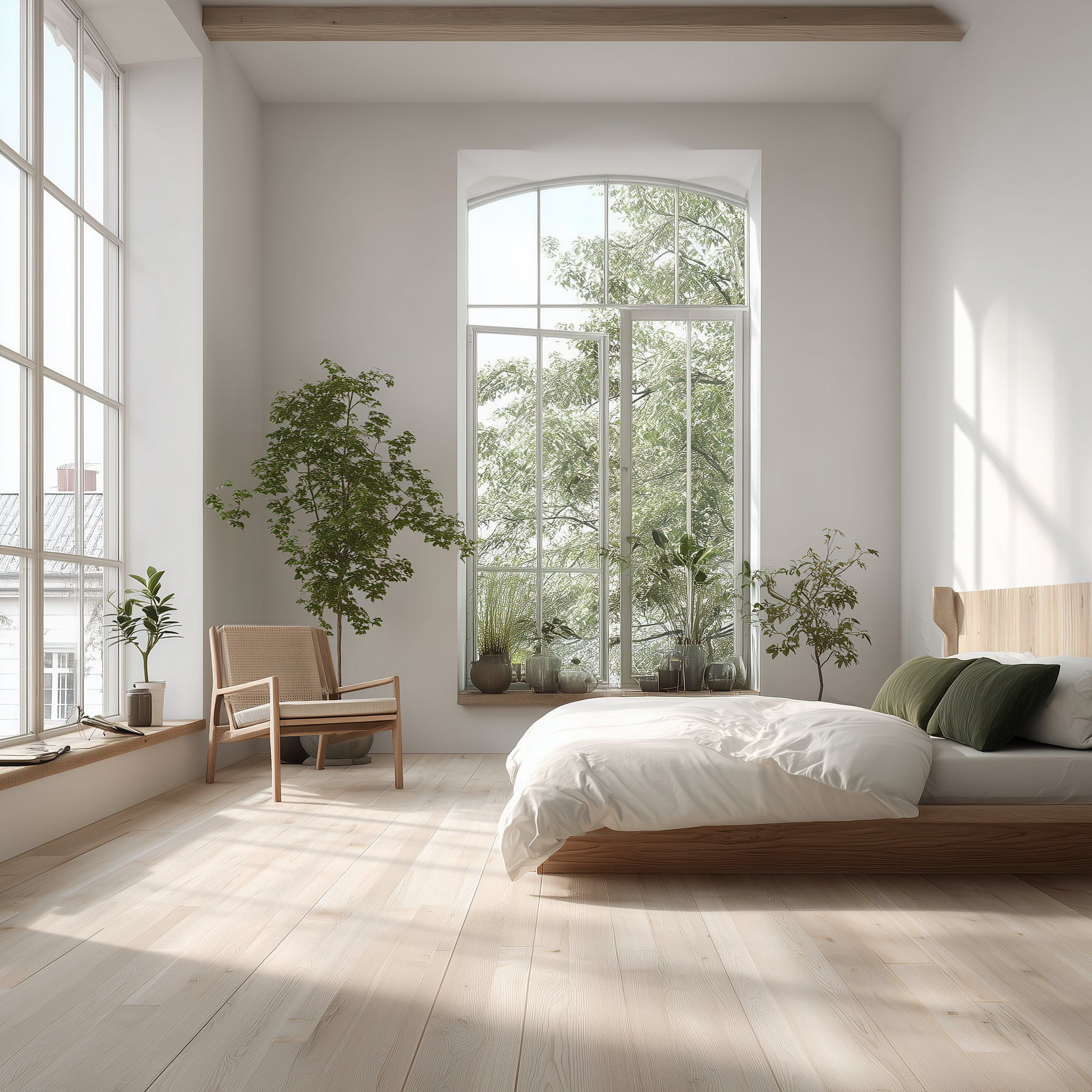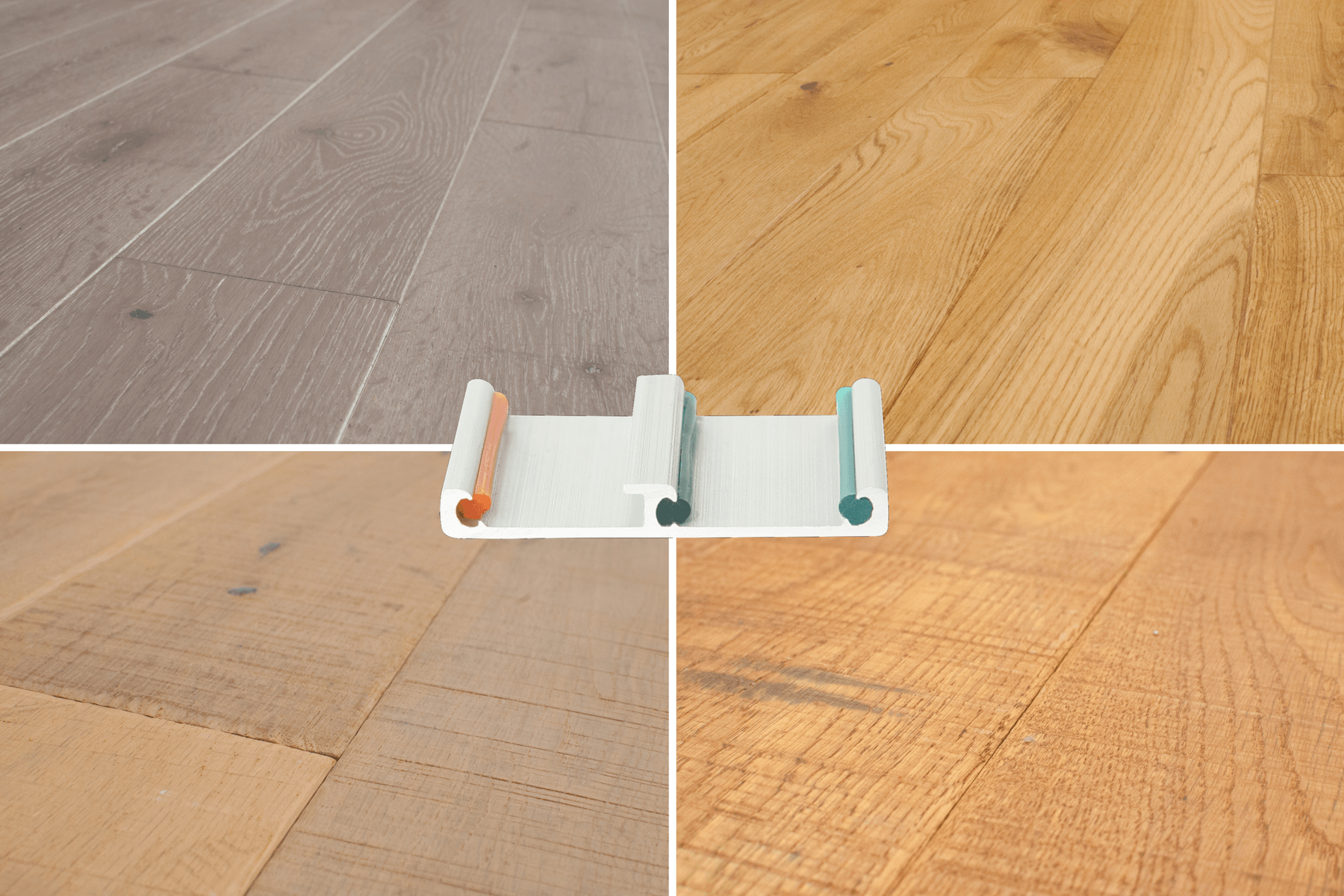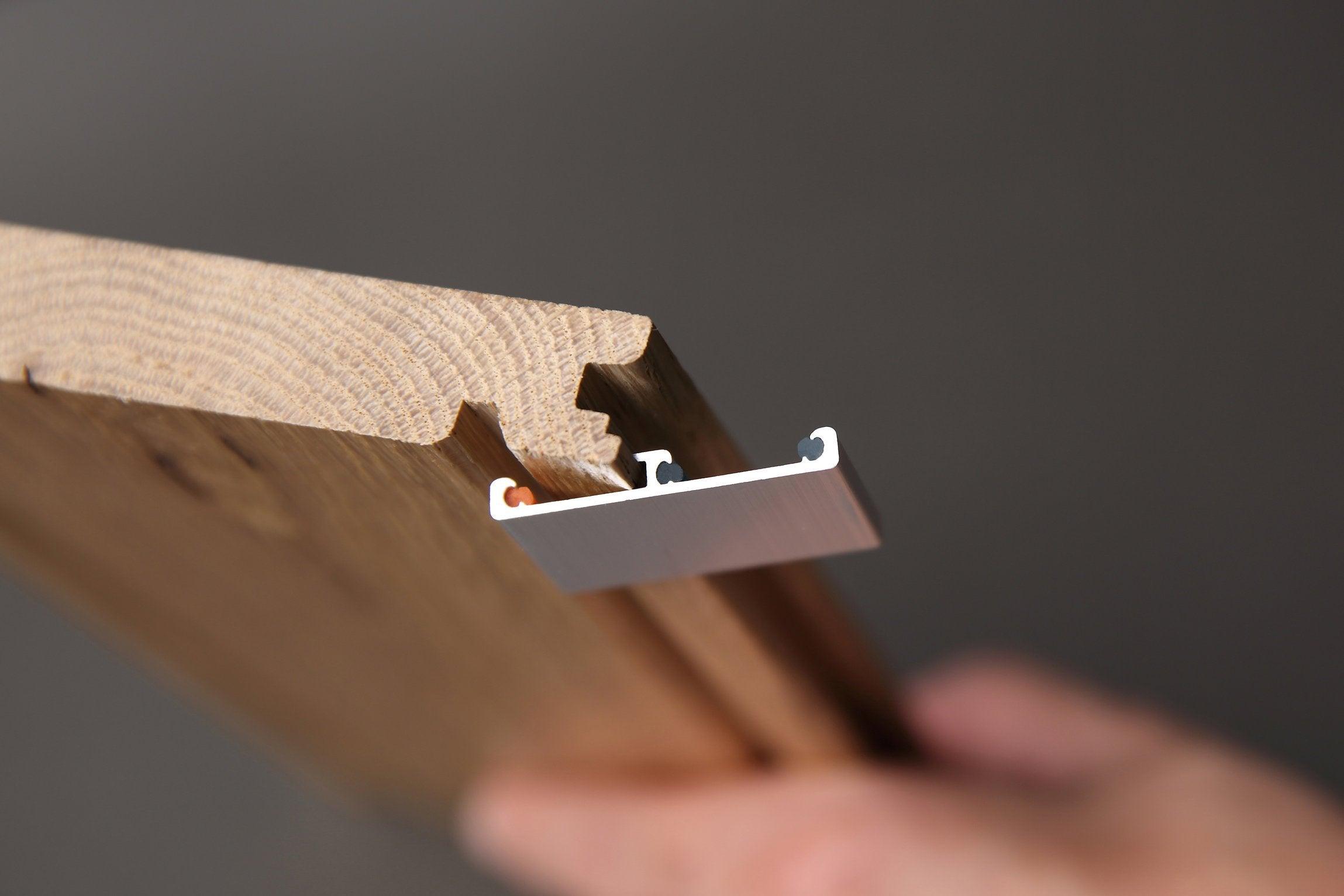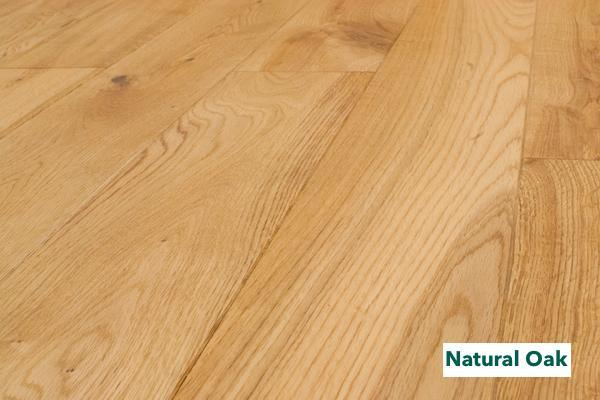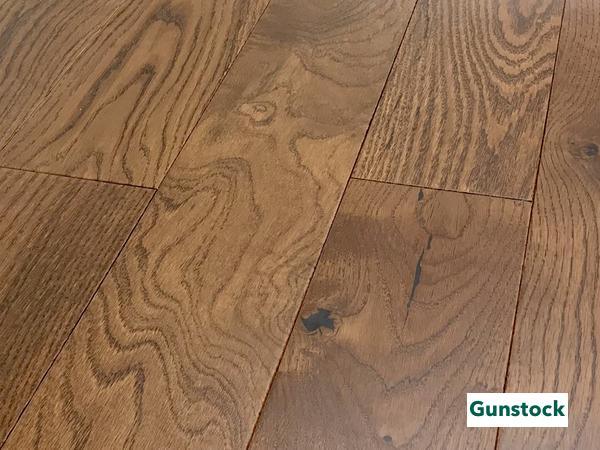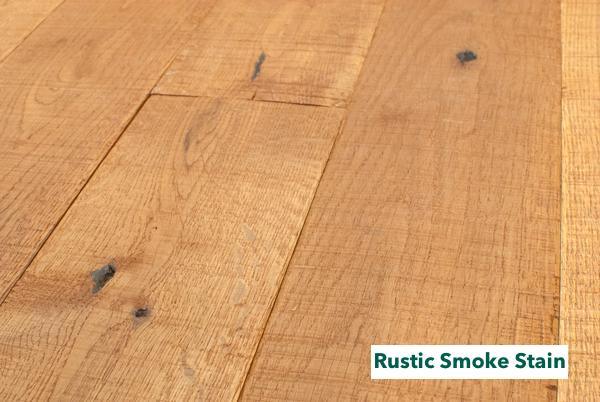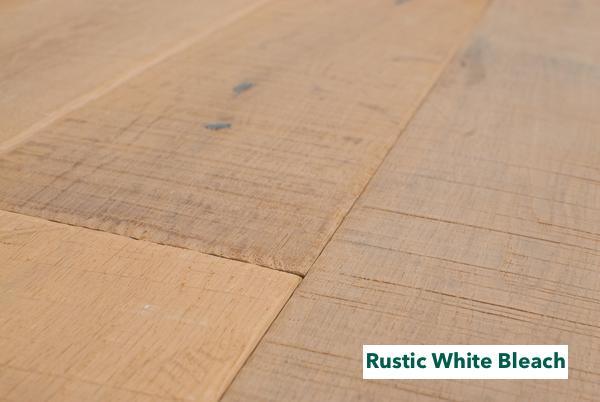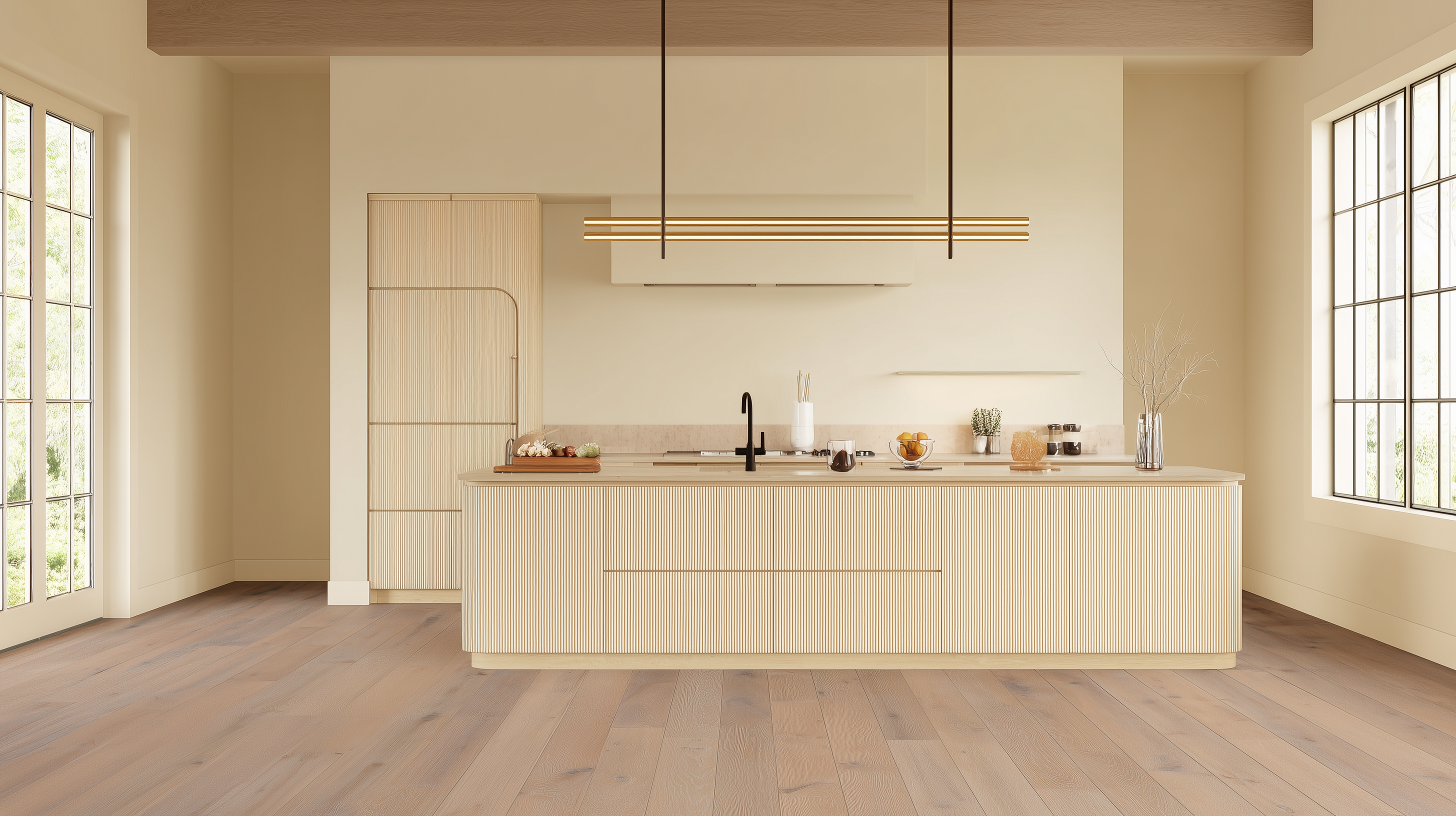Wood in the kitchen used to be a design no-no. Not anymore. With today’s finishes, sealants, and modern plank systems, hardwood floors can hold their own—even in the busiest room in the house. More than just practical, a wood floor adds cohesion, character, and warmth that tile simply can’t replicate. But before you commit, let’s walk through the options, trade-offs, and smartest ways to make wood work underfoot in your kitchen.
Solid, Engineered, or Reclaimed? Know Your Plank Options
Do you have a type of floor in mind for your kitchen? You need to understand the varieties of wood and finishes available. Each variation affects the cost, maintenance, and longevity.
The first consideration is the type of board or plank you want.
Solid Unfinished Planks
Installing a kitchen floor using unfinished planks is one of the best options. Why? The boards can be fitted tighter, sanded, finished, and sealed for a seamless fit. With no cracks or seams, water can’t penetrate the wood. Most unfinished lumber may still come with a beveled edge, but a good sealer will negate any water issues.
Finishing in place, or on-site means more mess and longer wait time before you can use the kitchen. It takes time to let stains and top sealers cure before you can add the next coat. The additional protection is well worth the wait.
Solid Pre-finished Boards
One solution to the problems of fumes from sealing the floor on-site is to buy pre-finished boards. It’s the most common type of floor plank on the market, whether solid wood or engineered.
The boards come already sanded, sealed, stained, and finished from the factory. The fumes have already dissipated by commercial ventilation instead of opening windows in your home. The downside is that most manufacturers add a beveled edge for consistency and durability. When installed, the edge can trap dirt and crumbs. For kitchens, you may want to add another coat of sealer across the floor to cover all the seams. Unfortunately, adding another layer usually voids the warranty, and you’re back to having fumes in the home.
Engineered Planks
Engineered floors are the modern way of having a wood floor in the kitchen without worrying about water damage. Engineered wood floors are thin veneers of real wood bonded to a substrate of plywood or synthetic material. They usually have a locking system enabling the floor to float over the subfloor without attaching it.
The disadvantage is that the veneer is thin. If it gets damaged, you won’t be able to sand and refinish it as you can with a solid wood floor.
Reclaimed Lumber
Reclaimed lumber is wood salvaged from floors in old factories, homes, and bowling alleys. It’s an excellent choice for kitchens because the boards have some dings and scratches. Adding a few more over the life of your kitchen only adds to the character.
Reclaimed planks can be resurfaced and sealed like new wood to prevent water seeping in. They add a rustic charm you can’t get with new wood floors.
Some of these plank options may or may not be available depending on the species of wood you choose for your kitchen floor. They will also determine the cost of your new floor.
Cost Breakdown: What to Expect Per Square Foot
The two primary factors in the cost of a hardwood floor are the type of wood and the quality. With solid wood floors, you can find different grades within each species. There is also a difference in the manufacturing process, such as unfinished, pre-finished, and engineered.
You would think that engineered floors would be less expensive since they have less wood. However, the manufacturing process is complicated compared to sawing and finishing solid wood. Engineered floors make up the difference by typically being easier and less costly to install.
Here are some sample flooring costs. Check with your local dealer to get precise quotes for materials and labor.
For North American hardwoods such as white oak, maple, and cherry, expect to pay between $5 and $10 per square foot. You’ll find exotic woods like mahogany and Brazilian walnut for around $8 to $14 per square foot.
Depending upon the species and veneer thickness, you can find engineered wood floors for as little as $3 up to $13 or more per square foot.
Unless you want to install it yourself, expect to pay about $3 to $8 per square foot for labor.
To get a good idea of the cost of your project, go to CostHelper.com, and search for “Wood Flooring Cost.” It has estimates for a variety of different floors based on real installations.
The Beautiful Upside of Wood in the Kitchen
Here are a few reasons why laying down a wooden kitchen floor is an appropriate choice.
Consistency and Continuity of Design
With more new homes and remodels opting for open floor plans, using the same wood floor throughout the area creates a more cohesive and spacious appearance. There is no point in taking down walls if the floors retain the same shape and colors of the original floor plan.
Wood is versatile and can be stained to accent any kitchen decor.
Wide Choice of Texture, Sheen, and Edges
The selections in textures, colors, and other appearances are nearly endless when it comes to wood floors.
Wood tones can range from light like white oak and bamboo to very dark like walnut or mahogany. Lighter woods can always achieve the perfect shade through staining. Because of the variety, it’s usually easier to match a floor’s color to the cabinets and counters than the other way around.
The topcoat or wear layer protects the wood underneath. It can be high gloss like a bowling alley or have less sheen like satin or matte. The lower the gloss, the less you’ll notice small scratches, and the more you’ll see the wood grain.
Wood flooring in kitchens can also have a variety of textures from smooth to the natural undulations of distressed or reclaimed wood. Rather than a mirror-smooth top finish, opt for a satin or matte finish to reduce maintenance for kitchens with a lot of activity. Go to this article, 9 Example of Seamless Wooden Flooring Texture, for more ideas.
Competitively Priced
Wood floors are in the same price range as tile and polished concrete. However, if you plan to do it yourself, you can significantly reduce your labor costs. One way to have a wood kitchen floor is to install a solid wood floor that clips together. It reduces the complexity of installation and is more forgiving for DIYers. This type of floor floats over the existing sub-floor, saving preparation time, and there are no nails, screws, or glue, reducing the costs even more.
Longevity and Value
Solid hardwood holds its value, increasing in character over the generations. Wood floors can last for 100 years with proper care and occasional refinishing. Simple preventative measures such as area rugs and felt pads for furniture legs will help the finish last for years.
Unlike engineered floors or tiles, solid planks can be sanded and refinished to look like new.
Softer, Warmer, and Quieter Than Tile
A hardwood floor in the kitchen is simply more pleasant to walk on. They are warmer and more comfortable for your feet than hard stone and cold ceramic tile. You can feel the difference if you stand in one spot for a while prepping food.
Plus, tile and stone tend to reflect more sound increasing the noise level in the kitchen.
Easy to clean
If the floor has a quality polyurethane finish, wiping up spills is as easy as any other floors. The only difference is if there are seams and beveled edges. You’ll need to vacuum more often to remove dirt and grit.
The beauty of a wood floor in the kitchen is undeniable, but a wood floor has some drawbacks.
What Could Go Wrong? Consider These Risks First
Before you opt for wood, consider these possible disadvantages to your living situation.
Water Damage
We all know that water ruins wood. If the plumbing doesn’t leak and you use an area rug by the sink to catch splashes, it should not be an issue. But, dripping water and wet mopping can ruin the wood. Water can seep in through the joints and seams of the flooring, causing warping, cupping, and staining.
If you have kids who continuously spill from a water tap on the fridge, and no one cleans it up right away, then wood may not be the best choice.
High Traffic
While wood is very durable, sometimes the finish is not. Pets and kids can damage shiny, smooth floors in no time. The alternative is to use distressed or reclaimed wood that already has damage. What the family does to it afterward, merely ads character. For high traffic areas, use polyurethane with a low sheen, like satin or matte. That way, you won’t notice scratches as much.
According to colleague UK kitchen installer Stephan Smith, the best compromise is to use carpets and mats for high-traffic area. The other option is to use different flooring materials instead of hardwood, which may not fit what you have planned for interior design.
If you want a show kitchen, but you have a full house and lots of traffic, you may want to go with another type of floor.
Maintenance
Wood kitchen floors are not something that you set and forget. Expect to sand and refinish them every 12 to 20 years. That may or may not be an issue for your application.
Edges and Seams
The only way to have a perfectly seamless, tight floor is to install and finish it on site. Pre-finished lumber is the most common flooring available, but at least one side will have a beveled edge. The edges will collect dust and dirt. You can’t seal pre-finished wood, so liquids can penetrate between the seams if not immediately cleaned up.
So… Is Hardwood Right for Your Kitchen?
Wood floors in kitchens aren’t just for glossy design magazines anymore. With the right product and a little prep, they can become the heart of your home—literally underfoot. Whether you’re drawn to the warmth of oak or the timeworn texture of reclaimed planks, today’s hardwood options make it easier than ever to get the look without sacrificing durability. Just be honest about your kitchen lifestyle, invest in the right finish, and enjoy a timeless surface that only gets better with age.
Ready to bring real wood into your kitchen?
Explore Easiklip’s solid oak flooring collection at www.easiklip.com – beautiful, pre-finished, and DIY-friendly (no nails or glue needed). Give your kitchen the upgrade it deserves with the warmth and ease of Easiklip.
